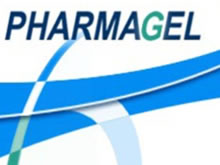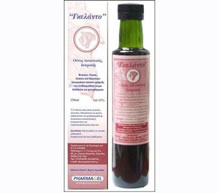
Λεξικό .. Allergoids
Allergoids
Chemically weakened substances (allergens) that can cause an allergic reaction. Reaction of ε-amino groups of lysine with potassium cyanate, maleic, or succinic anhydride leads to allergoids of low molecular weight. Based on the results of in vitro immunological studies the working principle of immunotherapy is determined by two effects. 1. Allergen proteins contain epitopes (the so-called B-cell epitopes) which are relevant for the allergen IgE interaction. 2. Allergen proteins contain sequential epitopes (mostly built from just a few amino acids, the so-called T-cell epitopes) wich are responsible for the interaction between T-cell and the allergen. According to the current knowledge it is undisputed that the immune restorative effect of specific immunotherapy is determined by the T-cell epitopes. At the same time it is important that the allergen is administrated in the highest possible dose. This problem can be overcome by a chemical modification of the native allergens thus creating the so-called allergoids. The main properties of such derivatives should be, as well as reduced allergenicity and retained ability to induce an IgG response (immunogenicity), the retention of native molecular weight (in order to pass mucosal barriers). The derivatives that fulfil these criteria are known as low-molecular-weight allergoids and are obtained by carbamylation [1] or acid anhydride treatment [2].
Norman et al (1981) [3]created an allergoid of ragweed by treating dialyzed defated pollen extract under mild conditions with formaldehyde. In comparison with allergen, allergoid has the advantages of prolonged shelf life, lowered potential to induce allergic reactions, enhanced immunogenicity due to increased size of the modified ragweed antigen molecules (average molecular weight, 260,000 daltons and more rapid induction of IgG antibody responses. Allergoids from grass and tree pollen have been used successfully for allegen specific immunotherapy (SIT) for many years. It has been demonstrated by Kahlert et al (1999) that 6-grass allergoids retain a highly reproducible t-cell stimulating capacity whwn they are presented by professional APC like DC and M[4].
Therfore allergoids are well suited for allegen specific immunotherapy by T-cell targeting without provoking all the side effects due to IgE-reactivity and further B-cell mediated Th2-cell activation[5] (Ćirković, 2002). The rapid induction scheme of sublingual immunotherapy induces an early immune suppression more effectively than the slower one. The rapid induction scheme should be the preferential way to start sublingual immunotherapy, particularly when monomeric allergoids are utilized[6].
References
1. Mistrello G, Brenna O, Roncarolo D, Zanoni D, Gentili M, Falagiani P. Monomeric chemically modified allergens: immunologic and physicochemical characterization. Allergy 1996;51:8-15
2. Cirković TD, Bukilica MN, Gavrović MD, Vujcić ZM, Petrović S, Jankov RM. Physicochemical and immunologic characterization of low-molecular-weight allergoids of Dactylis glomerata pollen proteins. Allergy 1999;54:128-134.
3. Norman, P.S., et al: Studies on allergoids from naturally occuring allergens. IV Efficacy and safety of long-term allergoid treatment of ragweed hay fever. J. Allergy Clin. Immunol. 68 (6):460-470, 1981.
4. Kahlert H et al: antigen-presentation of allergoids: Comparison of dendritic cells,macrophages and B-cells. The Annual Meetring of the European academy of allergology and Clinical Immunology Brussels, Belgium July 3-7, 1999.
5. Cirković T, Gavrović-Jankulović M, Prisić S, Jankov RM, Burazer L, Vucković O, Sporcić Z, Paranos S. S.The influence of a residual group in low-molecular-weight allergoids of Artemisia vulgaris pollen on their allergenicity, IgE- and IgG-binding properties. Allergy 2002: 57(11):1013-1020.
6. Di Gioacchino M, Perrone A, Petrarca C, Di Claudio F, Mistrello G, Falagiani P, Dadorante V, Verna N, Braga M, Ballone E, Cavallucci E. Early cytokine modulation after the rapid induction phase of sublingual immunotherapy with mite monomeric allergoids. Int J Immunopathol Pharmacol. 2008 Oct-Dec;21(4):969-76.
Γκέλης Ν.Δ. - Λεξικό Αλλεργίας - Εκδόσεις ΒΕΛΛΕΡOΦΟΝΤΗΣ - Κόρινθος 2013
Gelis Ν.D. - Dictionary of Allergies - VELLEROFONTIS Publications - Corinth 2013




